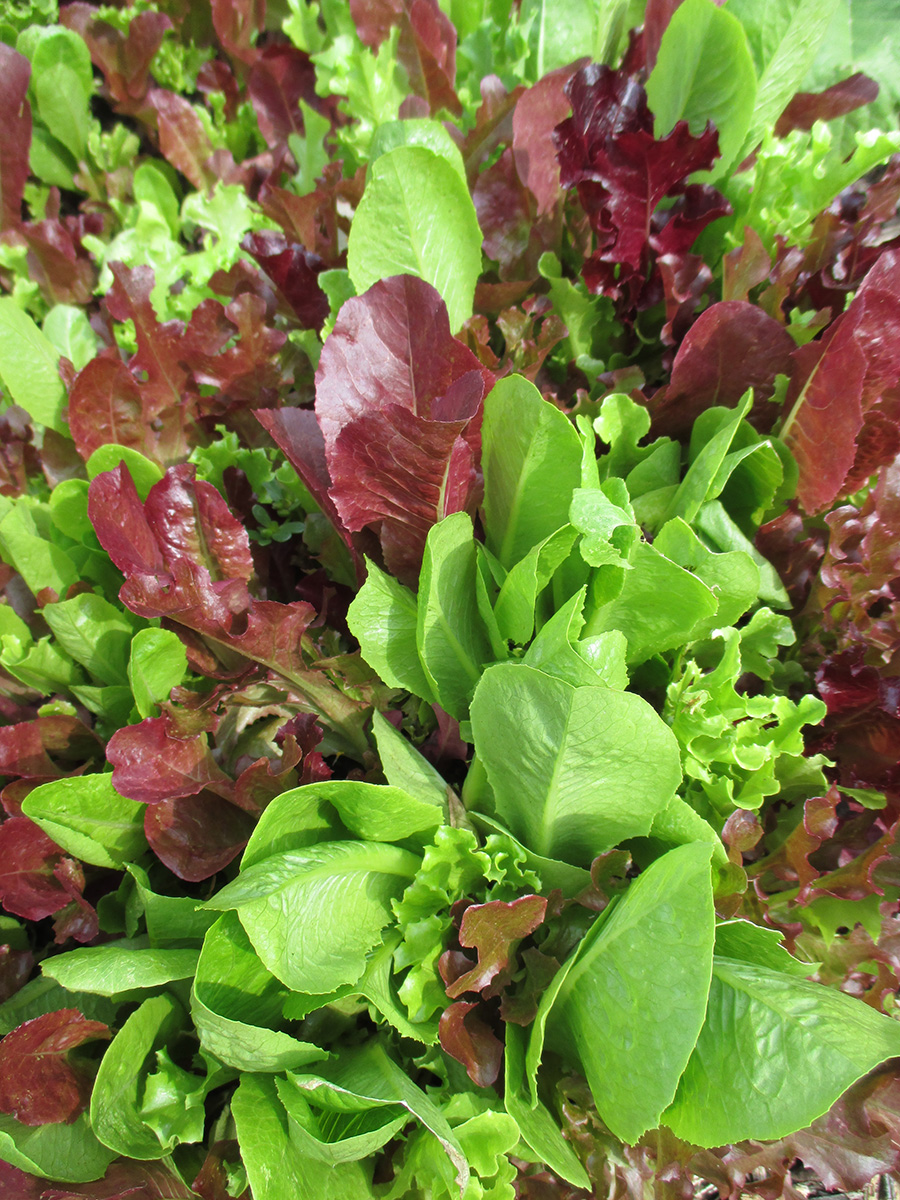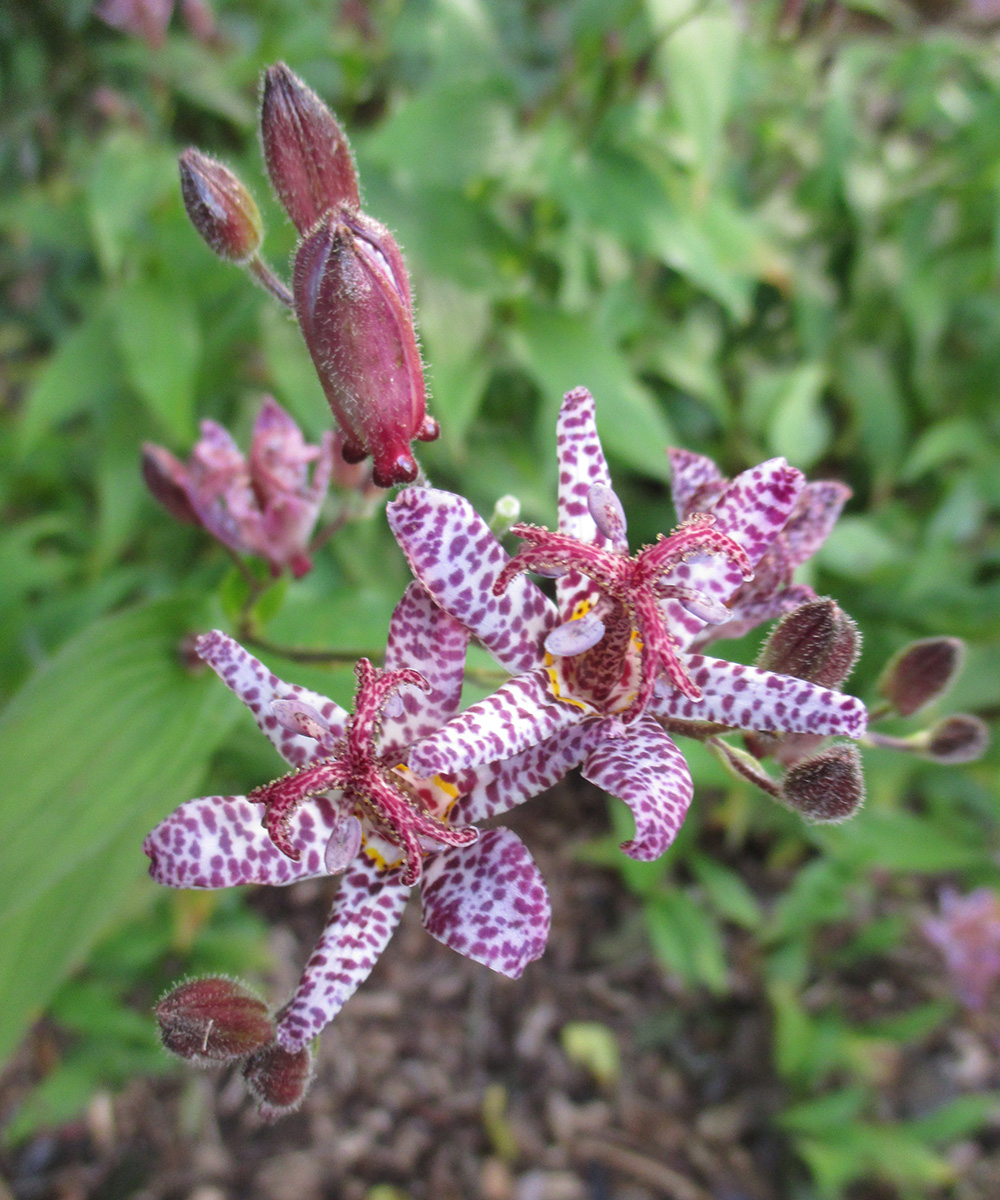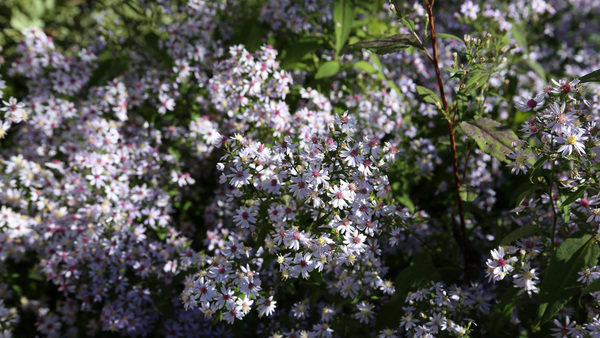
Plant fall containers. With some of our summer containers looking a bit haggard, this is a great month to revive container plantings by removing spent plants and replacing them with fresh ones that will go the distance into autumn. Extended interest can be achieved by incorporating frost-tolerant ornamental kale (Brassica oleracea cvs., annual), mums (Chrysanthemum spp. and cvs., Zones 5–9), asters (Symphyotrichum spp. and cvs., Zones 4–8), and ornamental grasses. Color and texture are vital in these containers. Also incorporate pansies and other frost-tolerant annuals to create dynamic displays into the cooler months of fall. Sometimes changing out the entire container is warranted, although judicious editing will be well worth the time and expense for extended impact.

Sow late-season greens. It’s not too late to take advantage of warm soil in your garden beds and containers for some quick sowing of select greens for enjoyment in the kitchen. It is important to choose crops that come to harvest before frost, that can be cut and utilized early as needed, and that don’t mind a bit of light frost. Aside from the amazingly wide range of lettuce varieties available, consider the quick germination and growth of other selections such as spinach, mustard greens, Swiss chard, beets, radishes, and turnips. Learn more about these fall crops here. With the approach of autumn in your location, the shorter days may slow up some growth, so go for quick maturation and plant your seeds or transplants as soon as possible, and then nurture them into early autumn.

Divide daylilies. If you missed the spring opportunity to divide your daylilies (Hemerocallis spp. and cvs., Zones 3–10), this month offers another great window for accomplishing this task. With their colorful summer blooms in recent memory, you can divide them for more plants or for the health benefits that division provides by relieving crowding, congestion, and loss of vigor. Dig up the entire clump, shake or rinse off the soil, and reveal the root system. One way to divide them is to place two garden forks back to back and pry the clump apart. Additionally, a sharp knife helps in pulling and separating the clump with the goal of creating divisions with at least two to three fans of leaves and good roots. Cut the foliage back to 6 to 8 inches. When replanting, make sure the crown is 1 inch below grade. Water-in well. Learn more about dividing daylilies and other perennials here. If you are in an area with jumping worms, do additional research on this problematic garden pest, and learn how to safely divide and transfer daylilies and other perennials without perpetuating the spread and dispersal of the worms. It can be tough deciding whether or not to accept divisions from others or give them to others due to the risk of welcoming or spreading these destructive worms.

Identify late-summer color lapses. As you stroll through your September garden, you can certainly reminisce about the wonderful sequence of colors and textures that your garden provided throughout the growing season. However, September shouldn’t be bereft of color. Your late-season perennials, texture, and foliage contributions, and your remaining annuals, should still be providing extended color and interest. It is a great time to wander the garden with a camera and capture images from different angles. Photos from within the home looking out upon the garden are helpful too. As you note lapses in color, consider how best to address those areas for the following year. Perhaps include more later-blooming perennials or more colorful conifers? Maybe ornamental grasses or late-blooming perennials would be a great addition for their lengthy contributions and late summer interest? Or perhaps you can insert some late season color by poking in cool-season annuals to get you well into autumn. Every gardening month should have this same evaluation, and ideally, many of your plants should be providing extended months of interest or seasonal contributions beyond their primary show.

Gather green tomatoes. As the days shorten and hints of autumn are felt with the morning crispness and cooler daytime temperatures, it’s not unusual to observe a high volume of green tomatoes still left in our gardens and wonder if they’ll ripen before frost. As a youth, I remember the threat of an early frost and how it spurred a frantic collection of hundreds of green tomatoes by my parents. Those green tomatoes, once laboriously processed and canned, went into sauces, stews, salsas, and much more. I have always enjoyed fried green tomato sandwiches, although it can be an acquired taste. Picking these tomatoes before frost is paramount. There are also ways to help ripen green tomatoes indoors. Exclude sunlight (place them in a paper bag), and provide good air circulation. You can also add a banana or apple to your collection of green tomatoes. With the banana or fruit emitting ethylene, it will help with the ripening momentum of your green tomatoes. While the greenest of tomatoes may take some time to ripen and the process may sacrifice flavor, those tomatoes showing even a hint of color are typically quite easy to ripen with this process, and their flavor will remain intact. Leave them on the vine as long as possible, but they don’t have to go to waste as the frost looms in your area.
—Mark Dwyer, former director of horticulture at Rotary Botanical Gardens in Janesville, Wisconsin, operates Landscape Prescriptions by MD.


















Comments
I like it
Log in or create an account to post a comment.
Sign up Log in